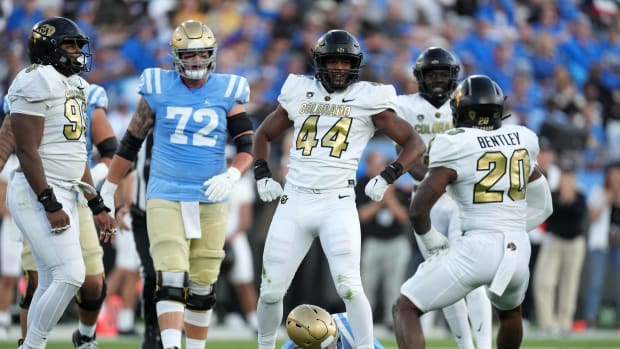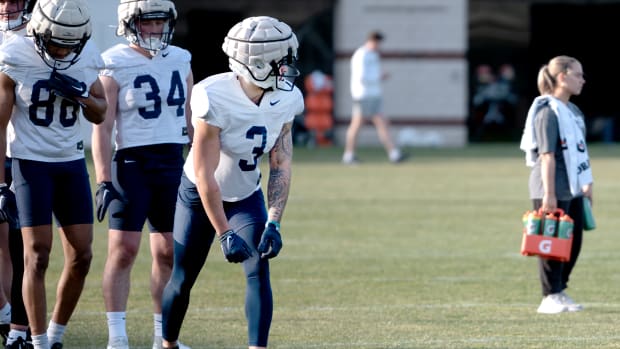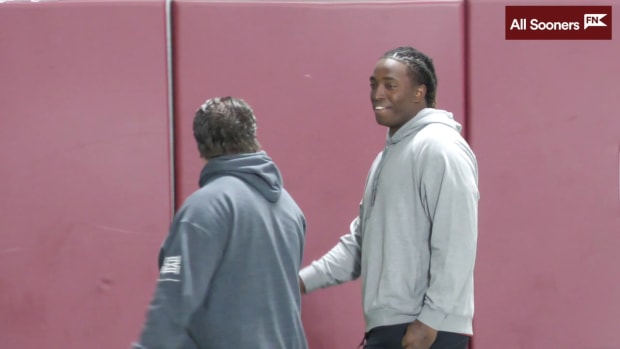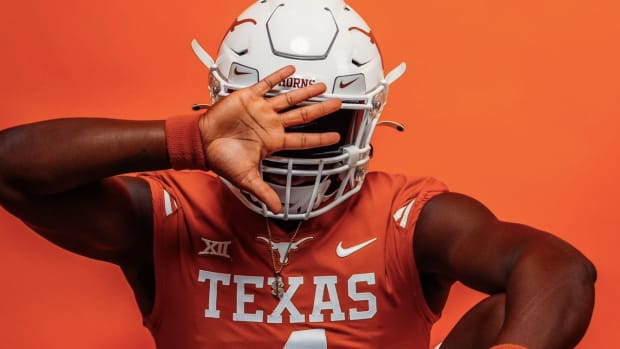Sources: C-USA Asks AAC to Consider a Reorganizing of Both Conferences
Conference USA executives sent a letter Tuesday, which can be read here, to their brethren at the American Athletic Conference asking them to consider a regionalization model to reorganize the two leagues, sources tell Sports Illustrated.
The proposal, originating from C-USA commissioner Judy MacLeod, would require the conferences to remake themselves based on geography, creating two new leagues under different names. C-USA presidents met Monday to approve the decision to reach out to the AAC, seen as the next step in what’s been a weekslong process of drafting reorganization models.
When reached Tuesday, MacLeod declined comment on the conference’s request to the AAC. But she acknowledged her league’s intentions to regionalize with another Group of 5 conference in light of the latest realignment wave that has engulfed college sports.
“There’s so much insanity,” MacLeod says of the latest realignment, triggered by Texas and Oklahoma’s impending departure to the SEC. “This is worth a shot instead of continuing to perpetuate the insanity. Our presidents are willing and would like to have broader conversations about it. We can’t do it alone.”
C-USA’s regionalization model would serve as an alternative option to the domino effect of realignment, potentially slowing any future movement on the G5 level. However, most within the college sports industry believe it to be a long shot. AAC commissioner Mike Aresco has publicly spoken against any type of merger plan.
In fact, the AAC is targeting several schools to fill voids left by Houston, Cincinnati and UCF, which announced in September that they plan to join the Big 12 as soon as 2024. One of the conference’s top targets is C-USA member UAB, multiple sources tell SI. The Blazers and the league are holding ongoing discussions.
UAB would complete a feel-good tale if the deal comes to fruition. The program disbanded its football program in 2014 before restarting it in 2017. It has flourished under coach Bill Clark, claiming three straight division titles and the Conference USA championship with an 11-win campaign in 2018. Just this year, the school opened a 47,000-seat, $175 million stadium in downtown Birmingham.
MacLeod says she is not aware of any impending departure of any one of her members.
In the meantime, she is speaking publicly for the first time about her regionalization proposal that, she says, would inject more natural geographic rivalries into college sports and would save on travel expenses at a financially distressing time.
An AAC and C-USA reorganization would likely be made along East–West lines. The plan does not call for one new conference but two remade leagues under different conference names.
The western conference would include SMU, North Texas, Rice, UTEP, Southern Miss, Tulane, Tulsa, Louisiana Tech, Wichita State, UAB, Memphis and UTSA. The eastern conference would feature East Carolina, Charlotte, Old Dominion, Temple, Marshall, FAU, FIU, South Florida, Middle Tennessee, Western Kentucky and two potential new additions.
This would provide more geographic-friendly matchups and would eliminate distant trips. For instance, Temple and SMU, separated by 1,600 miles, are both in the American. In the reorganization proposal, the Owls and Mustangs would be in separate conferences.
The reorganization would pair neighboring schools currently existing in different leagues. C-USA schools like Florida Atlantic and FIU would be in the same conference as South Florida, currently in the American. East Carolina, in the AAC, would find itself in the same conference as Charlotte, currently in C-USA. The same goes for Tulsa, an AAC member, and C-USA school North Texas.
In an interview with OwlsDaily last week, Temple president Jason Wingard described the makeup of college conferences today as geared more toward revenue than geography, something that stresses travel budgets, creates problems academically and diminishes rivalries.
“As the conferences continue to realign, I think all of those issues are being considered as schools are trying to figure out where they want to be and conferences try to figure out which schools they want to have as members,” he told the outlet. “But revenue is really driving these decisions. And geography is not. So more money is being made, but more money is being spent in these solutions.”
MacLeod has briefly described her reorganization proposals with other commissioners, but doesn’t know “if people are willing to get in,” she says.
“I don’t really understand the fear and paranoia about getting some groups together and talking,” she says. “With all the uncertainty right now in college athletics, there’s a chance for us to build something stable.”
C-USA, which employs former Big Ten commissioner Jim Delaney as a consultant, has developed several different models for a reorganization, including one that involves the Sun Belt. Despite having some support throughout its own league and even some others, the effort is seen as a longshot, mostly because of the long-standing Group of 5 pecking order based on media rights dollars.
The three conferences—Sun Belt, AAC and C-USA—are separated by their television deals. The AAC distributes around $6 million annually in TV revenue compared to about $500,000 in the Sun Belt and C-USA. However, industry experts expect the loss of Houston, UCF and Cincinnati—three of the biggest G5 names—to adversely impact the American’s ESPN TV deal, decreasing distribution substantially.
More College Football Coverage:
• Which One-Loss Teams Are Still Playoff Contenders?
• Texas A&M's Bama Upset Disrupts National Landscape
• Evaluating College Football Rivalries





